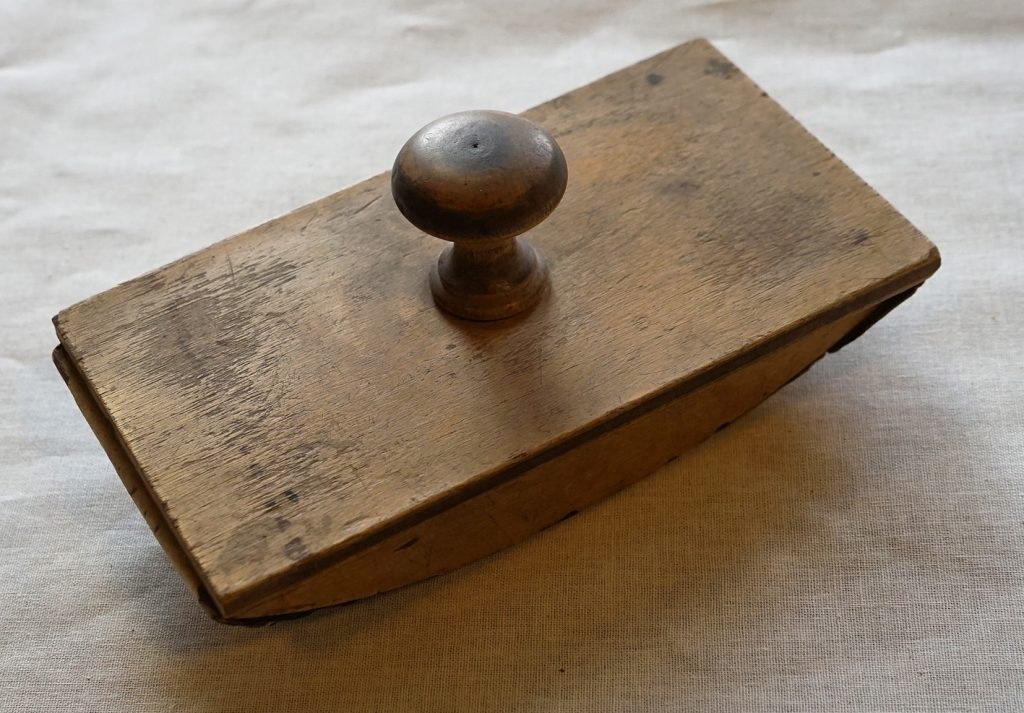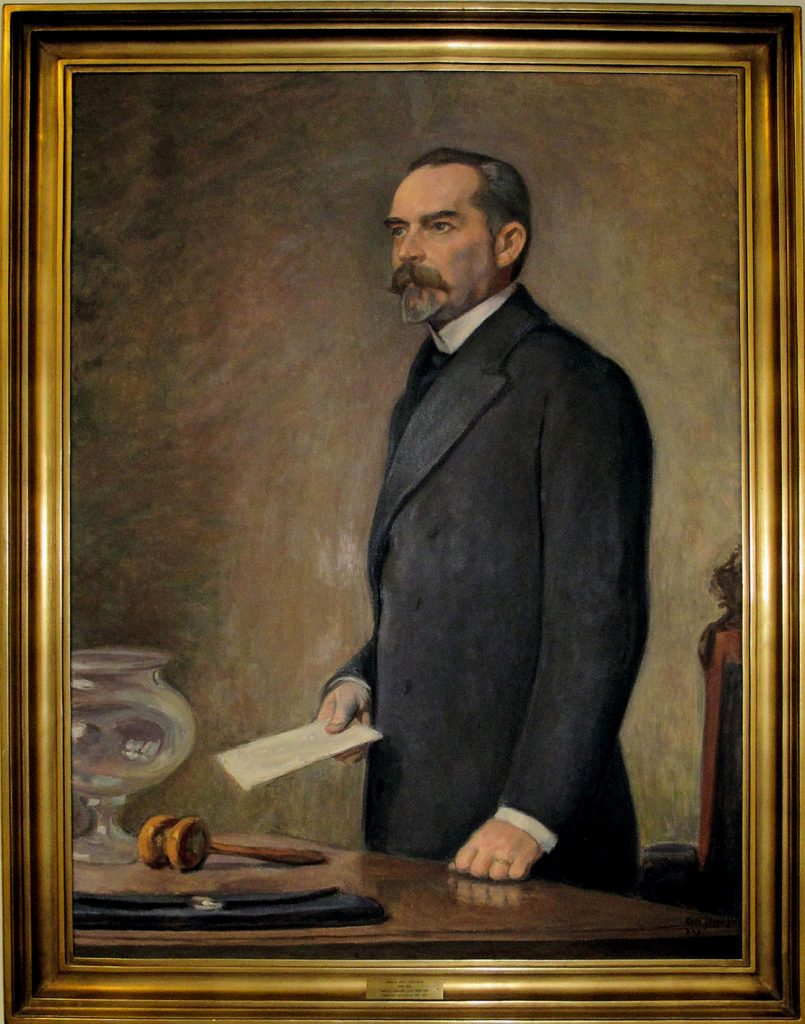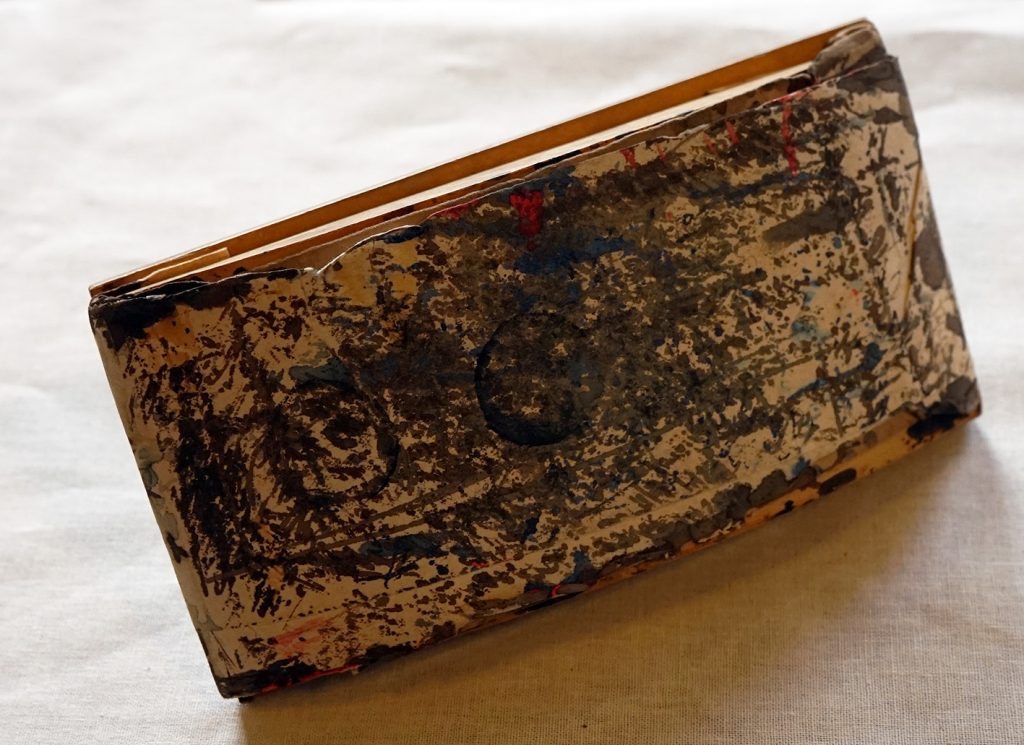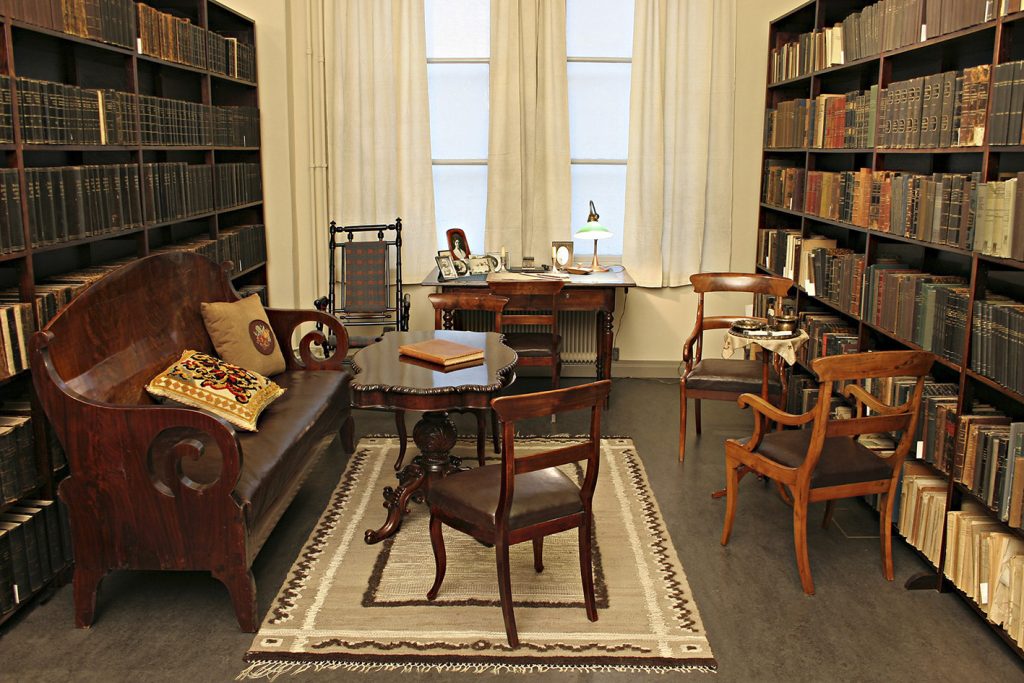The ballpoint pen replaced the refillable fountain pen in popular use in the 1960s. Since then, many accessories for fountain pens, such as ink bottles, cartridges and blotters, have largely vanished from desks and offices, and fountain pens have become collector’s items. Our object of the month, a wooden ink blotter, dates back to a period when fountain pens were still widely used. Its original owner was President and Professor Kaarlo Juho Ståhlberg.

A legal scholar who became the first Finnish president
Carl Johan (later Kaarlo Juho) Ståhlberg was born on 28 January 1865 in Suomussalmi. His talent and diligence were evident early on – he was top of his class throughout his schooltime. He went on to excel at university too, completing a doctoral degree in both laws – secular or Roman law and ecclesiastical or canonical law – in 1893. His magnum opus Suomen hallinto-oikeus I ja II (‘Finnish Administrative Law I and II’) was long used as a textbook at the Faculty of Law.
Ståhlberg had the knowledge and the skills required for the many positions he held during his extensive career. He served as Professor of Administrative Law and as a Member, Senator and Speaker of Parliament. He held the post of President of the Supreme Administrative Court in 1919 when elected the first President of the Republic of Finland after the country declared its independence in 1917. Ståhlberg has had a long-lasting influence on Finland: the Constitution drafted under his leadership remained in effect until 2000. During the turbulent last decades of Russian rule in Finland and the subsequent first decades of Finland’s independence, Ståhlberg retained his confidence in the republic, democracy and the rule of law in building Finnish society. “A country is governed by law, not by emotions,” he said.

From a useful tool to a museum object
The ink used in fountain pens dried more slowly than the ink in modern ballpoint pens. An ink blotter was a handy tool to dry a text or signature written with a fountain pen to avoid stained fingers and smudges on paper. The traces on Ståhlberg’s ink blotter suggest it has been used a great deal. The round handle has been polished smooth from use. The lid bears signs of wear and scratches. The light-coloured blotting paper attached to the bottom is stained almost black with ink.

Our object of the month originates from Ståhlberg’s study in his Kotirinne villa in the Kulosaari district of Helsinki. Ståhlberg and his wife Ester lived there from 1929. Their second-floor sea view was obscured only by a few trees. Floor-to-ceiling bookshelves were stacked with legal tomes and statute books. After his term as President, Ståhlberg continued his scholarly and political work, serving, for example, as a senior member of the law drafting committee for 20 years. Meetings were often held in Ståhlberg’s study at home.

Ståhlberg used his study and its contents until his death on 22 September 1952. Later that year, the government bought the furnishings and Ståhlberg’s library from his estate and handed them over to the University of Helsinki. The contents of the study were turned into a museum opened to the public in the University’s Main Building in autumn 1957. In 1980 the objects were moved to the Supreme Administrative Court where the public was able to explore them on open days.
This object will be included in the museum’s new core exhibition, to be opened in the University of Helsinki Main Building in autumn 2023.
Katariina Pehkonen, curator
Sources:
Heinämies, Kati: Presidentti K.J. Ståhlbergin työhuone. Korkeimman hallinto-oikeuden julkaisu 5/1988.
Rossi, Venla: Ståhlbergin perhehuolet. https://www.hs.fi/kuukausiliite/art-2000009268668.html. Accessed 25 January 2023.
Tyynilä, Markku: Ståhlberg, Kaarlo Juho. Kansallisbiografia-verkkojulkaisu. Studia Biographica 4. Helsinki: Suomalaisen Kirjallisuuden Seura, 1997. Permanent identifier http://urn.fi/urn:nbn:fi:sks-kbg-000626. In English: https://kansallisbiografia.fi/english/person/626. Accessed 23 January 2023.
Information on Kaarlo Juho Ståhlberg on the Supreme Administrative Court website: https://www.kho.fi/fi/index/korkeinhallinto-oikeus/presidentit/kaarlojuhostahlberg.html# (in Finnish). Accessed 25 January 2023.
